1lumen selects and reviews products personally. We may earn affiliate commissions through our links, which help support our testing.
Fenix PD35 V3.0 Review
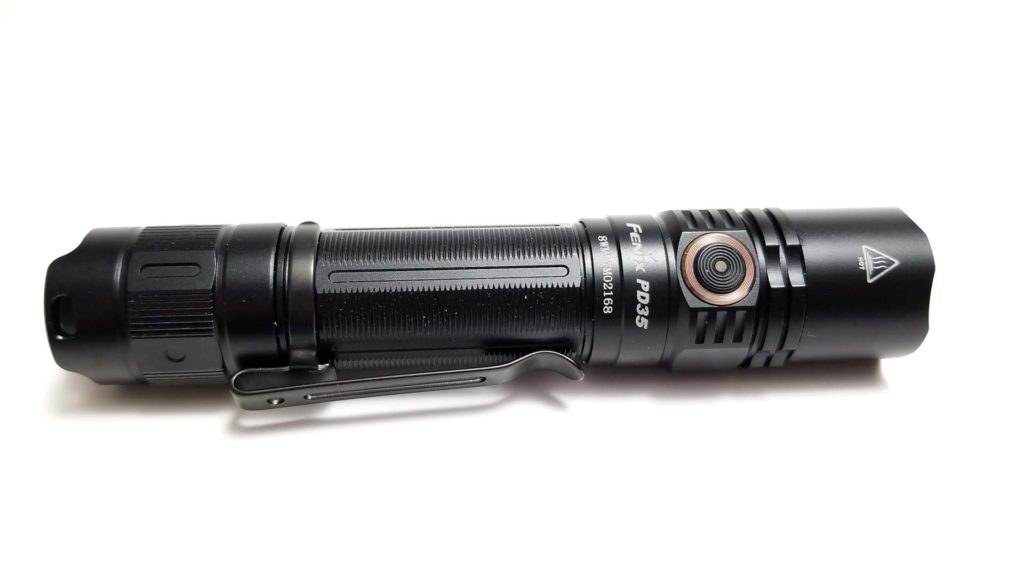
Fenix PD35 V3.0 specifications
| Brand/model | Fenix PD35 v3.0 |
|---|---|
| Category | Tactical flashlight |
| LED | Luminus SFT40 |
| Lumens | 1,700 lm |
| Beam intensity | 31,900 cd |
| Battery config. | 1*18650 / 2*CR123A |
| Material | Aluminum |
| Modes | 5 |
| Blinkies | Strobe |
| Reflector | Smooth |
| Waterproof | IP68 |
| Review date | December 2021 |
Introduction:
Fenix has been in the flashlight business for a long time and maintains a very strong presence in the industry. With facilities in China and the USA (via their parent company Open Air Brands, LLC), if you need a professional-grade flashlight, Fenix makes one to fit just about every application. One such light is the PD35. Introduced wayyyyy back in 2013 as an upgraded version of the PD32, it was an 18650 or 2 x CR123A tube light with a side switch, rear forward-clicky switch for some hardcore tactical action, and a whopping 850 Lumens on Turbo courtesy of a Cree XM-L2. Fenix has a habit of continuously improving their products, and the PD35’s first big update came in 2015 with the Tactical Edition, with the then-new Cree XP-L, 1000 Lumen Turbo output, and a new side switch. 2018 saw the introduction of the PD35 V2.0, with cosmetic changes, but was otherwise unchanged from the previous model. For late 2021, Fenix has released a refreshed version of the PD35, dubbed (what else) the V3.0. However, aside from a brand new emitter, not much has changed from the last version. The tactical and professional-use light scene is pretty crowded with some great choices like the Cyansky K3, Olight Warrior 3, Brinyte P-series, Nitecore P and M-series lights, so let’s see if the PD35 V3.0 brings the thunder!
Package quality.
The Fenix packaging scheme is carried across the product lines, and the PD35 V3.0 features an attractive and entirely appropriate layout. It’s very retail-friendly with a hang tag and a glossy relief of the light on the front with lots of features and specs on the front in the familiar Fenix orange and black. On the back we find the familiar table of specs and output for each mode. Pretty standard stuff. Inside, the light is riding in a molded plastic carrier with the accessories housed underneath. I really like the carrier design since it has a hinged flap that covers the accessories underneath to keep them from spilling out when you pull the carrier out. Thanks Fenix. Like my other Fenix lights, you get a comprehensive set of standard equipment:
- Fenix PD35 V3.0
- Fenix ARB-L18-2600U 2600 mAh 18650 battery (mounted in the light)
- 2 Spare o-rings
- Spare switch boot
- Lanyard
- Manual
- Promotional card
- Micro USB charging cable
- Holster
This is typical Fenix here and they give you everything you need to get started, including the battery, and this would be perfect for someone new to lithium-ion powered flashlights since there’s no need to buy a charger or a battery. Moreover, the CR123A compatibility means you can forgo the 18650 altogether. No complaints with the accessories either. Everything’s high quality, including the lanyard, US cable, and holster.
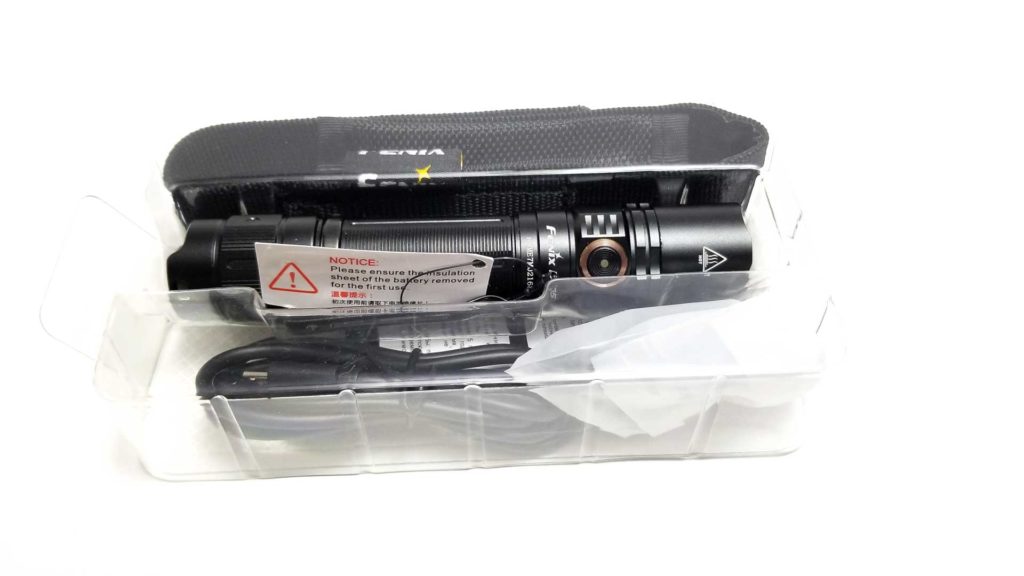
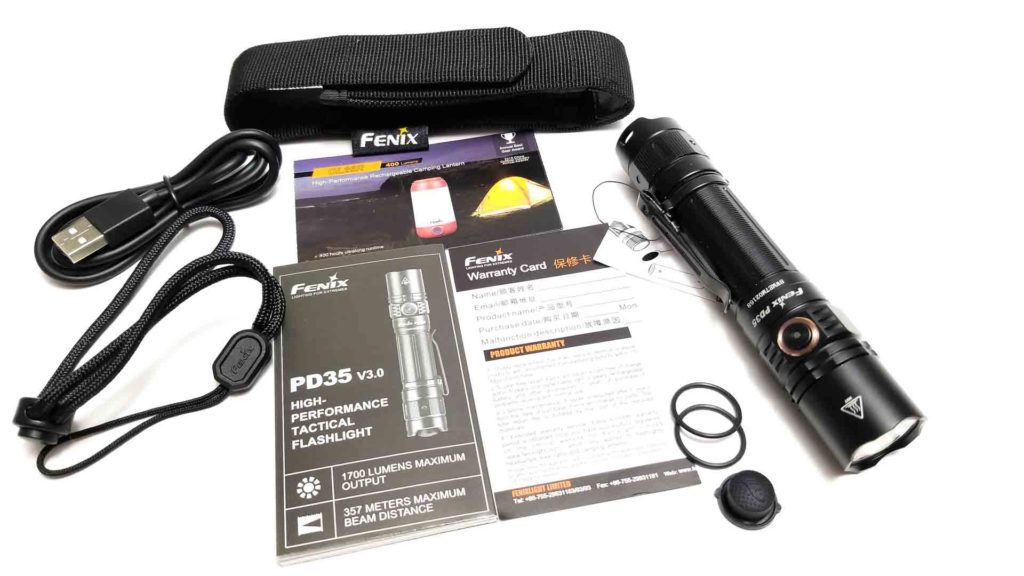
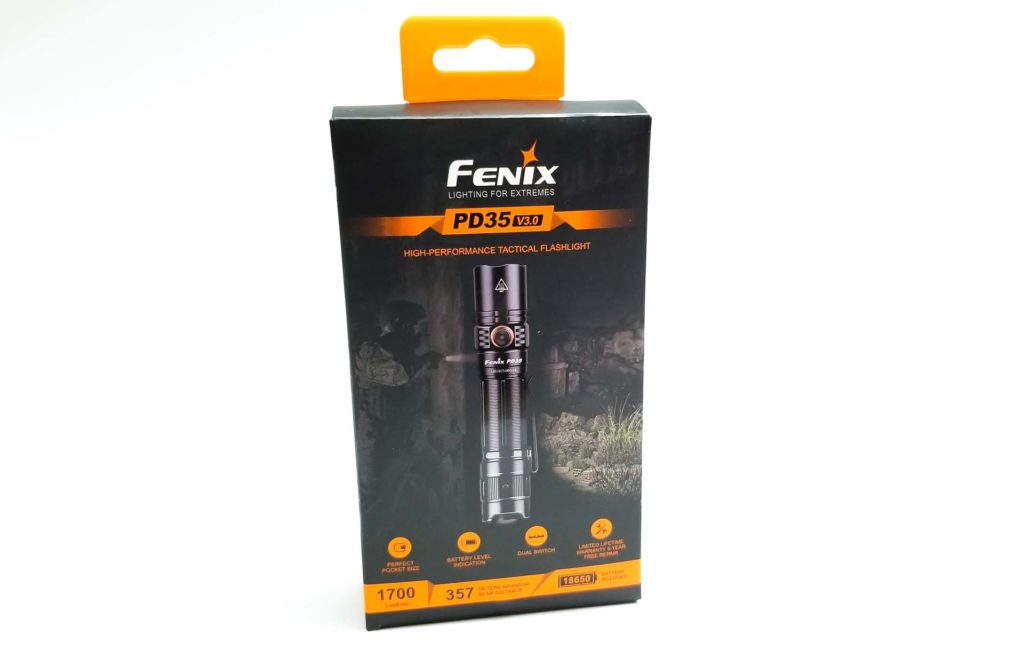
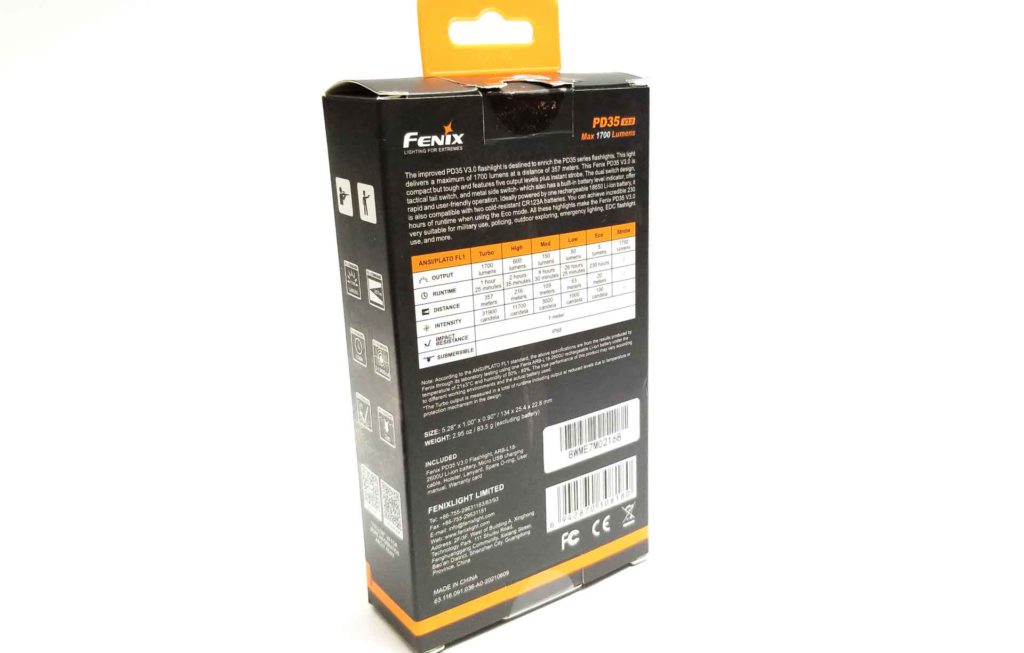
Flashlight in use
The Fenix PD35 V3.0 hasn’t changed much in 8 years form-factor wise. It’s still an 18650 tube light, so the handling is very nice. It’s basically the same diameter as a Convoy S2+, and it has nice balance and feels great in the hand. The body is sized right for one-handed operation of the two switches as well. I could easily activate the tail switch and side switch with one hand (with some practice). I really like how easy it is to point as well. I think a professional would appreciate the ease of handling. Like other Fenix lights, traditional knurling is tossed in favor of reeding, and honestly, it’s not as grippy as the reeding on some other Fenix lights I’ve tested. This could be an issue for gloved, wet, muddy, or otherwise slippery hands.
The e-switch and rear forward clicky switch arrangement is carried over from the previous PD35s, and this is becoming a common sight on formerly clicky-only configurations. The side switch has a central LED indicator that shows battery state, but only for the first 3 seconds after the light is activated: Solid green 100-85%, blinking green 85-50%, solid red 5-25%, and blinking red 25-1%. The side switch sticks out a bit and is located in a spot that makes it easy to find by feel. It takes some effort to press, but it didn’t seem as clicky or snappy as some other e-switches. In contrast, the rear forward switch had great feel and feedback with nice snappy clicks. I think this is one of the best-feeling forward switches I’ve used in a while. The tailcap has two places for threading the included lanyard, and it can also be mounted to the removable pocket clip. The clip was very securely attached, and took quite a bit of effort to remove. It’s not exactly a deep carry clip, but works fine, even on thin clothing. The rear switch boot is a bit proud, so tail standing is a no-go.
Fenix sells a generous assortment of accessories for the PD series, including slip-on diffusers, traffic wand, a duty holster, remote switches and mounts for WML-duty, and even a light filter adapter.
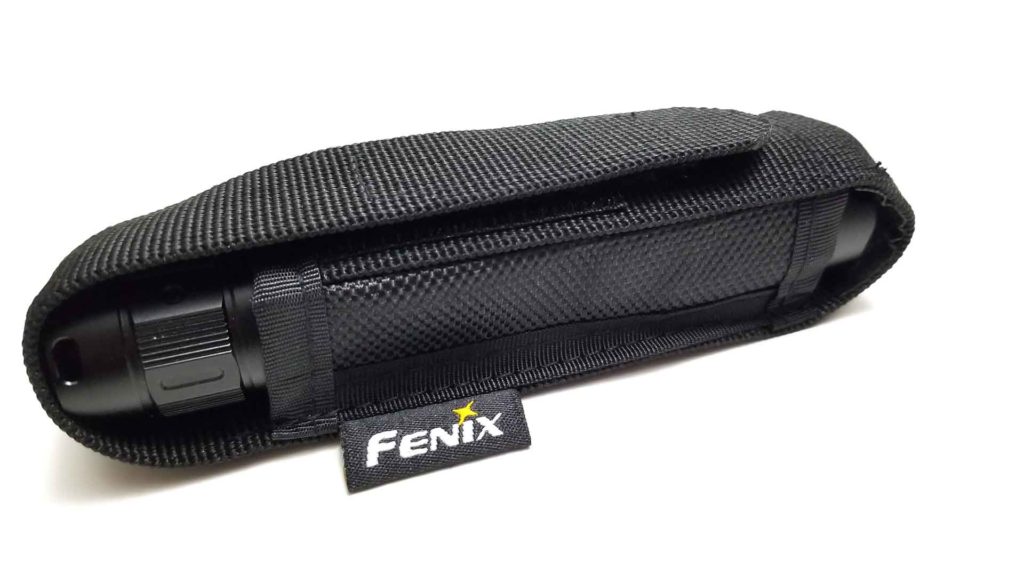
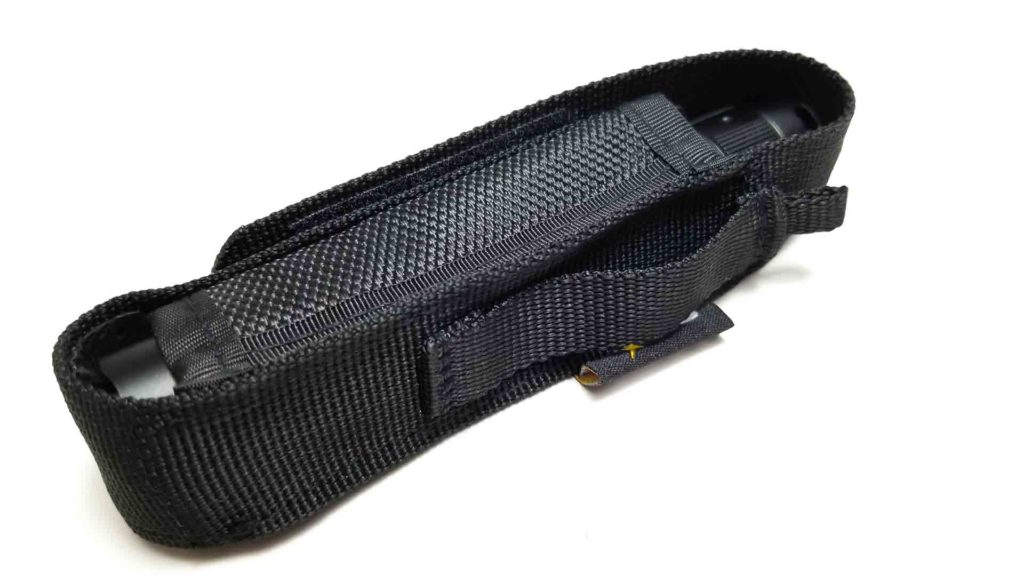
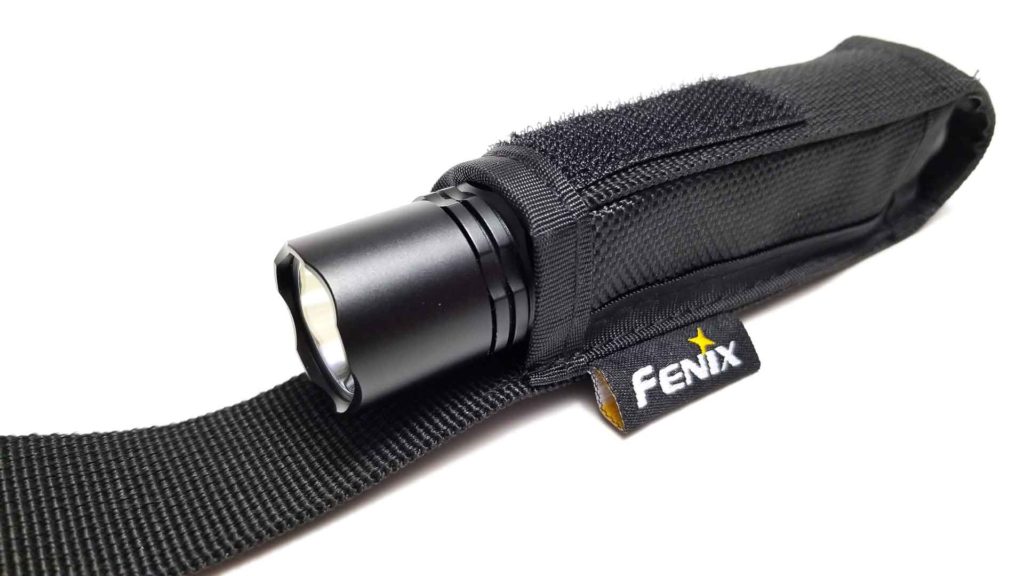
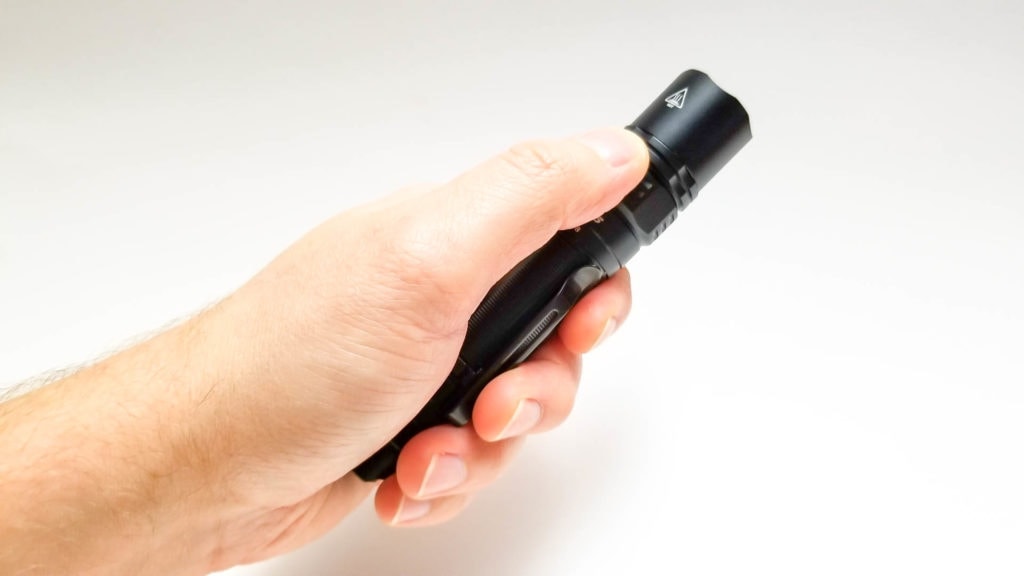
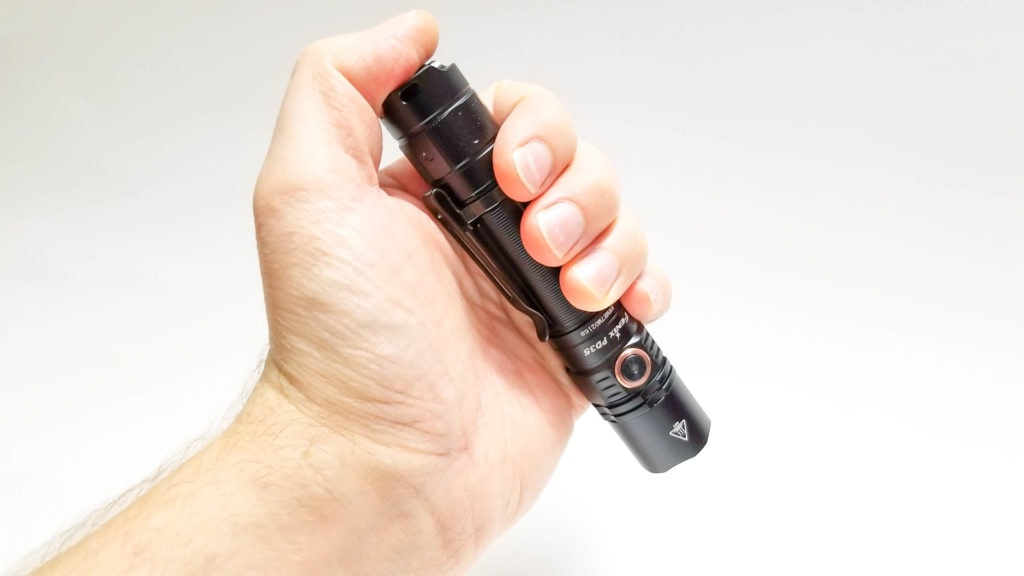
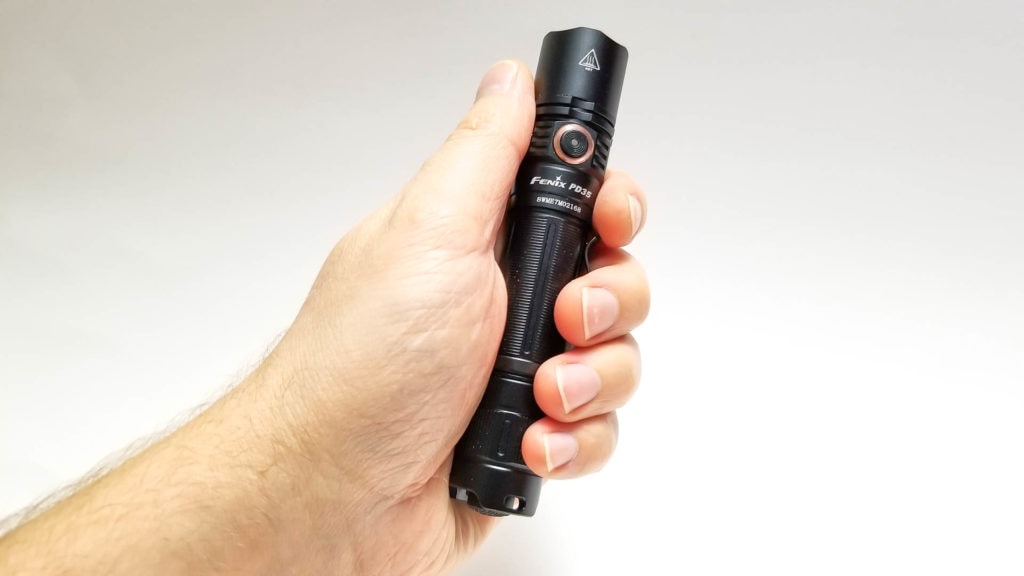
Build Quality, and Warranty
We’re getting some fantastic budget flashlights these days, with quality matching (or exceeding) higher priced brands. Although the PD35 series have never been budget lights, Fenix makes what I consider to be professional-use flashlights. The quality (and quality control), fit, finish, and materials, not to mention electronics, are a step above more budget brands. Fenix knows folks who rely on a flashlight to work, every time it’s clicked on, will pay extra for that assurance. The PD35 V3.0 is priced around $80 US, and that seems like a lot when an Sofirn SC31T costs around $30, but remember, you’re getting a very high quality, high performance item that will be reliable, perform to factory spec., and last a long time.
The light is machined from 6061-T6 aluminum, and the build quality, fit, and finish are superb. The machining is super smooth and very precise, with no tool or machine marks, and although there were abrupt edges in some spots, there weren’t any sharp edges. All the parts fit together and mate up perfectly. The finish is MIL-A-8625 Type III, the same as on my other Fenix lights, and honestly, it’s not my favorite. It’s a bit too glossy and not very grippy. Still, it’s flawlessly applied, no blemishes, no thin spots, and will be very durable. My other Fenix lights are holding up great. The silk screen text is sharp and precise as well. The only removable part is the tailcap, and it can be disassembled for maintenance or cleaning, but otherwise the light is completely sealed up. There’s springs at both ends (tail, and driver), and they’re reasonably thick gold plated units. Dual springs are good to have because they absorb shock that could be transferred to the driver or battery, and essential for using on a long gun to mitigate recoil impulses. The rear threads are fully anodized, square cut, and very smooth with lots of silicone lubricant. There’s a decent-sized o-ring sealing the tailcap as well, and with no external charge port, Fenix gives the PD35 V3.0 an IP68 ingress protection rating for 2 meters of immersion for up to 30 minutes.
Fenix’s warranty is excellent. From the Fenix site: “5 Years on the Light (1 year on the included rechargeable battery if there is one) **If you register your light on the manufacturer’s website, your warranty is extended an additional 6 months on the light and battery. Fenix offers a Limited Lifetime Warranty. There is a full-coverage period where both parts and labor are covered. See above for details. After the Full-Coverage period is over you have a Limited-coverage Warranty or the life of your light. Repairs will be made with no labor charges and as long as parts are available from the manufacturer. You will be charged for the parts needed to repair your light. You are to pay shipping to the address provided in the Warranty and Repair Form. We will cover shipping back to you after the light has been repaired.”

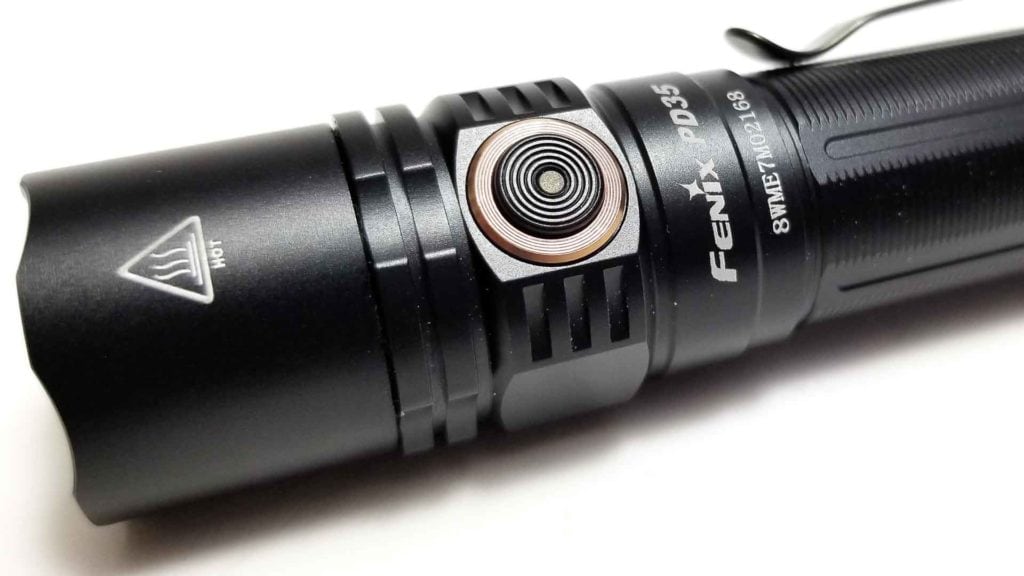
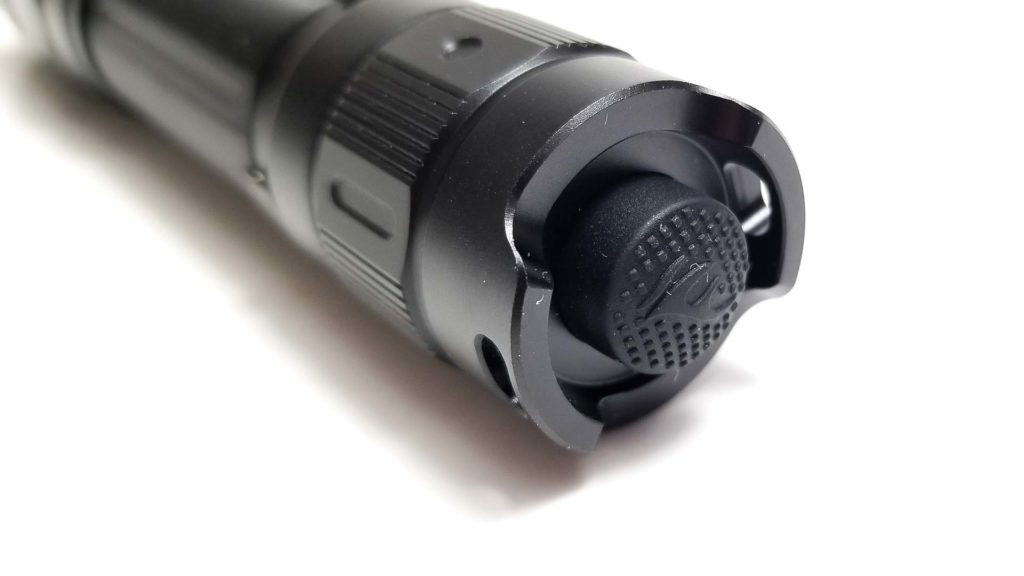
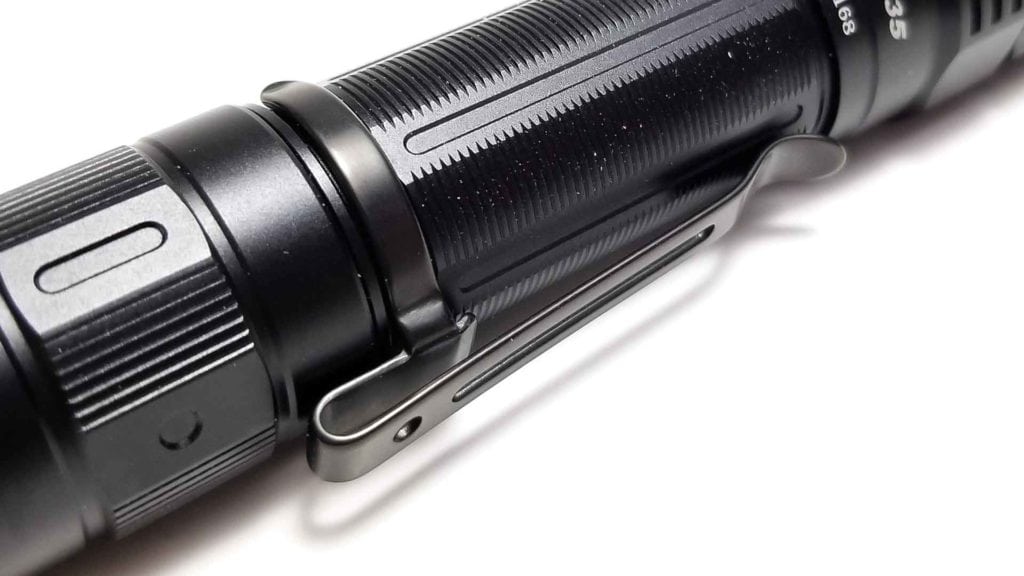
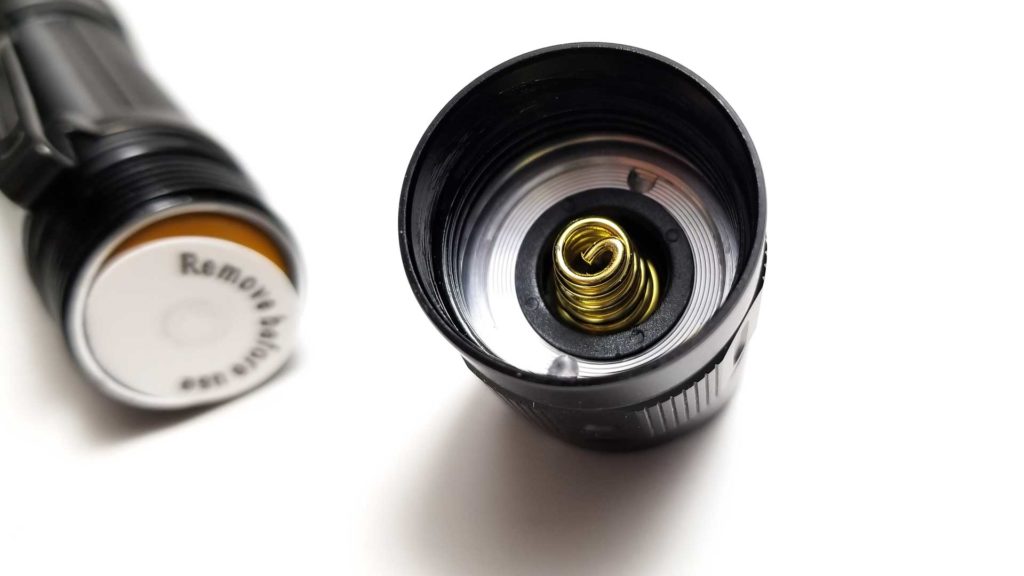
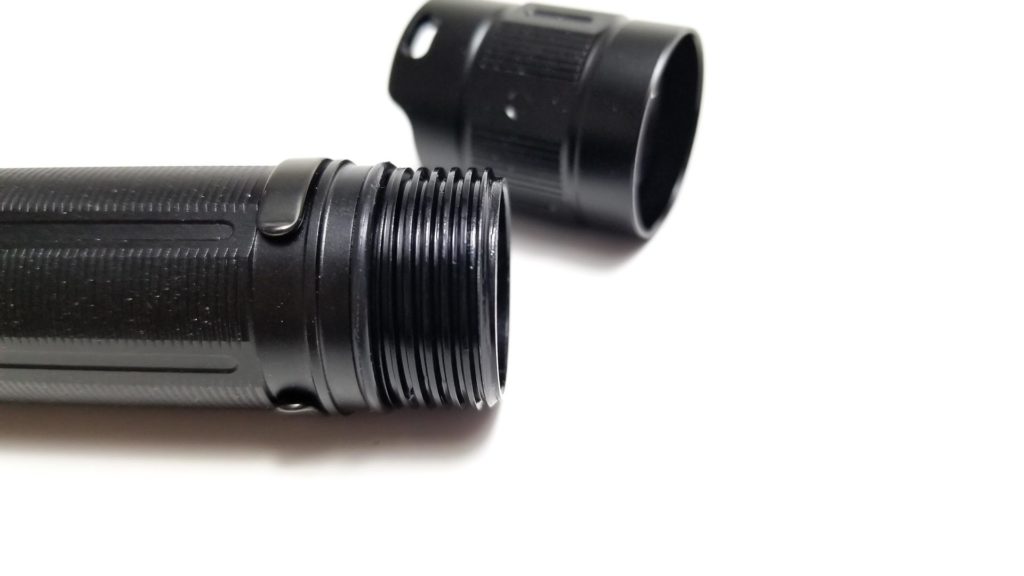
LED, Lens, Bezel, Beam, and Reflector
As mentioned in the opening, the major update to the V3.0 is the LED, and I’m glad Fenix didn’t carry forward the XP-L or even revert to the SST40 (as much as I love that emitter) for the V3.0, and went with my other favorite Luminus LED, the SFT40. This emitter has a 2 mm x 2 mm die, and shares the 5050 (5 mm x 5 mm) size substrate with the SST40 and XHP50.2. Advertised CCT is of course cool white, and my Opple Lightmaster 3 shows it around 5400K and 60 CRI on Medium. Duv is 0.0140, so a bit above BBL.
It runs on 3 volts, but the similarities end there. This is a completely new emitter design with 4 bond wires and no silicone dome (and no, it’s not a domeless SST40). It can be driven much harder than the SST40 without grenading itself, so you get really high output, and, being domeless, much higher cd/mm2 for better throw. It really is the best of both worlds. The throw is not on par with something like an Osram W2 or W1, but it throws very well. The PD35 V3.0 has a fairly deep SMO reflector with the SFT40 perfectly centered. The reflector is flawless, and topped by a (and very purple) AR coated mineral glass lens. The bezel is very large, (and glued on), and has shallow crenulations. The lens is set back about 2 mm, so it should be well protected from drops.
The beam is really nice, and pretty similar to the Acebeam P15 Defender I tested earlier. There’s a pretty large well-focused hotspot surrounded by diffuse spill. The AR coating on the lens is visible on the edge of the spill as an artifact, so it is noticeable, but not annoyingly so. It’s about like a super-sized version of a thrower beam and I really like it for general purpose use. The throw is pretty good for a 1 inch head as well.
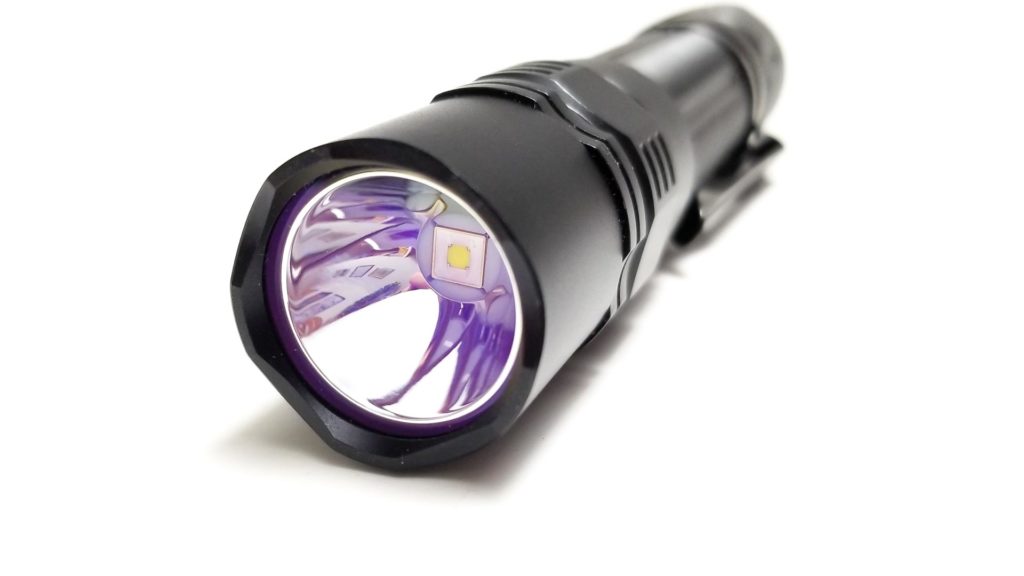
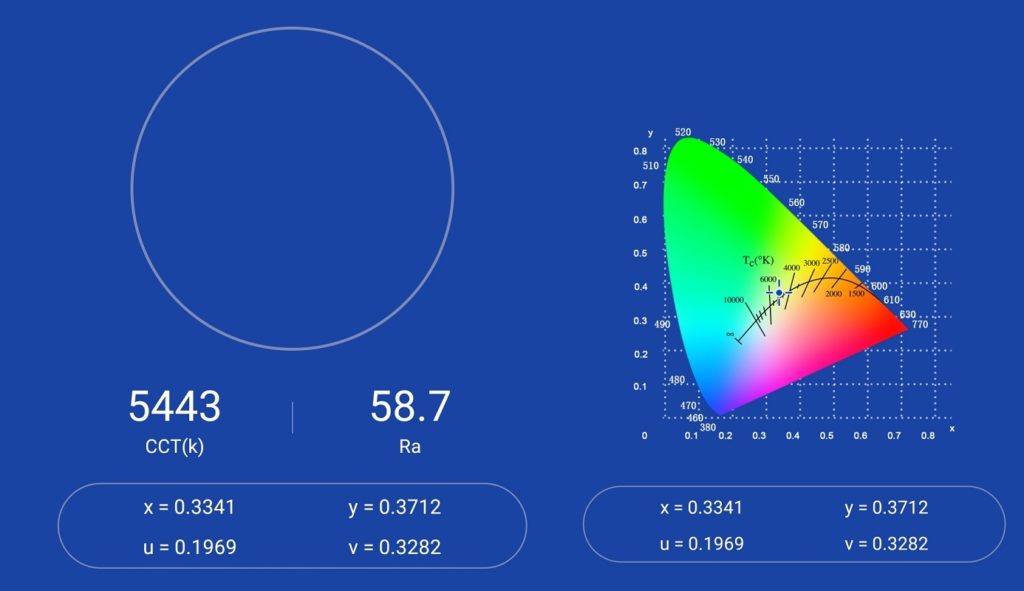
Dimensions and size comparison
- Length: 13.4 cm / 5.28 inches
- Head diameter: 2.5 cm / 1.0 inches
- Body diameter: 2.28 cm / 0.90 inches
Weight:
- Without cells: 83.8 grams / 2.93 oz.
- With cells:132.1 grams / 4.65 oz.
Tactical Flashlight comparison
The PD35 V3.0 is an 18650 size tube light, and comparable to the Sofirn SC31T in dimensions and weight.
Group 1 left to right: Fenix PD35 V3.0, Fenix PD36 Tac, Fenix TK16 V2.0, Fenix E09R
Group 2 left to right (18650 tactical lights): Thrunite BSS V4, Acebeam P15 Defender, Sofirn SC31T, Fenix PD35 V3.0, Speras E3, Acebeam L17.
Group 3 left to right: Fenix PD35 V3.0, Thorfire C8, Streamlight Stinger.
I included the Streamlight Stinger to show how much flashlights have changed. The Stinger was an extremely popular duty and professional-use flashlight, and I got this one around 2006. It was (and still is, albeit in LED form), a very popular choice for law enforcement, security guards, maintenance techs, and other professionals and was superior to the Maglites of the time due to its smaller size and lighter weight (and rechargeable battery). Still, it only managed about 80 Lumens with a fresh battery.
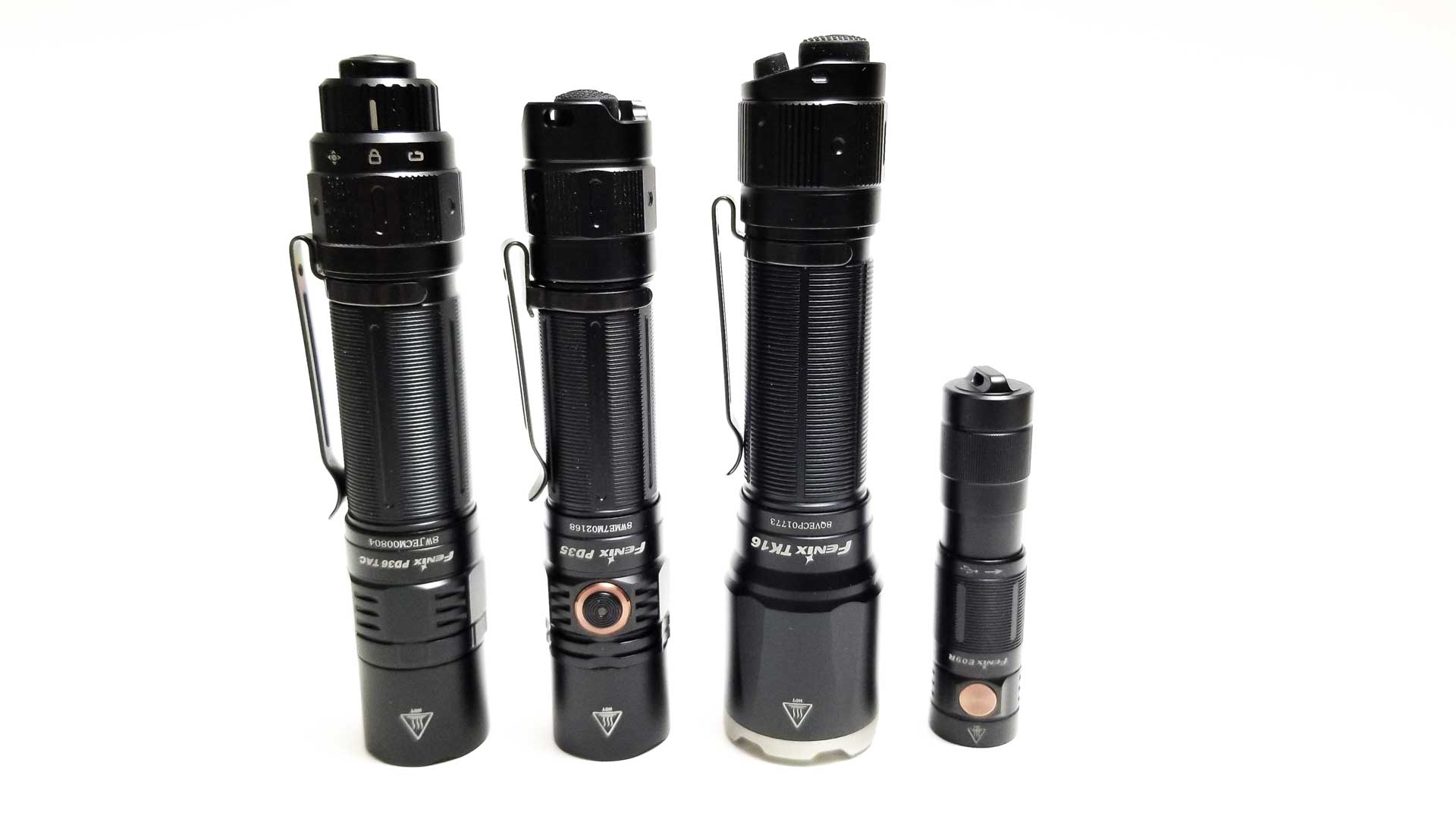
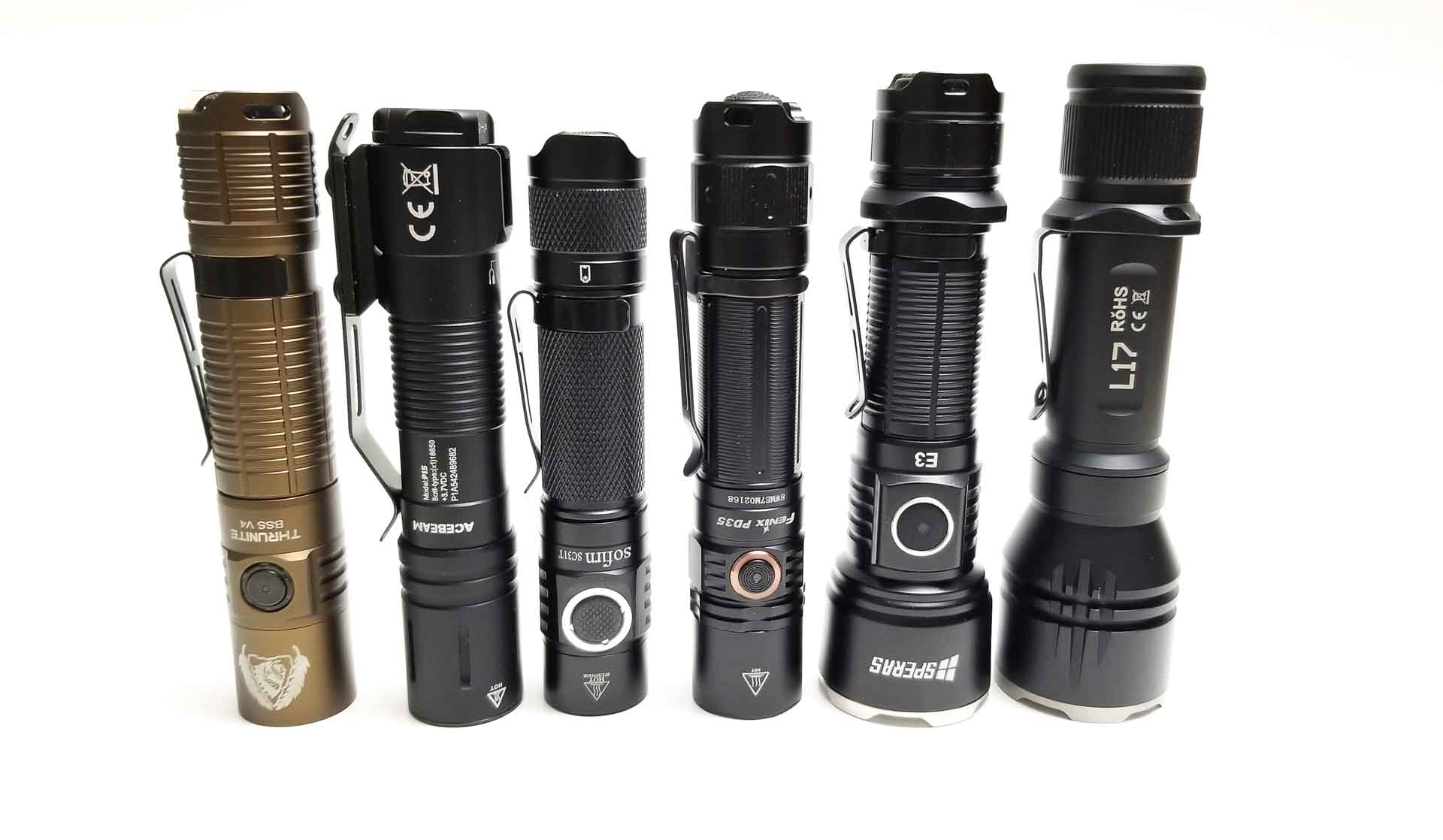

Driver & User Interface:
Since the PD35 V3.0 can use 2 x CR123A lithium primary batteries, it’s probably sporting a buck driver which is awesome. They provide consistent output, and help to justify the price premium here. FET drivers and linear drivers are much cheaper to produce, and don’t provide the same performance or efficiency over the batteries’ usable capacity.
The UI is elegantly thought out and is very user-friendly. It’s 5 modes with a single strobe. Easy. My wife was able to figure out the V3.0’s UI very quickly, unlike my Anduril lights, with the incessant, “how do I turn this thing on?” You activate the light with the rear forward tail switch and it acts like an on-off switch, so the light is useless until you click on the rear switch. I’m not a huge fan of this, and would prefer a switch setup like the one on the Thrunite BSS V4 I tested. Once on, mode switching is handled by the e-switch. The only shortcut is press and hold for Strobe. Turbo and Eco (moon) are part of the main UI modes.
Available modes: Eco, Low, Medium, High, Turbo, Strobe.
From OFF:
- Press and hold side switch: N/A
- Single click rear switch: Turns on in last mode
- Single click side switch: N/A
- Double click side switch: N/A
From ON:
- Press and hold e-switch: Activates Strobe
- Single click rear switch: Turns off
- Single click e-switch: Switches modes
- Double click e-switch: N/A
Mode memory:
- Yes, recalls last used mode for all modes except Strobe
Shortcuts:
- To Strobe: Press and hold the e-switch in any mode while on.
Low voltage warning:
- Yes, When the battery is below 3 volts, the output drops exponentially, eventually settling on Eco and the switch LED blinks red 3 times every 10 minutes
Strobe/blinkies
- Single variable strobe, accessed by pressing and holding the e-switch for 0.5 seconds in any mode.
Lock-out mode:
- None. The light can be locked out by unscrewing the the tailcap 1/8th turn
PWM
- None
Additional info on the UI: This is a well-executed UI, and what I’ve come to expect from Fenix. It’s not complicated (Anduril, NarsilM, or complex proprietary UIs should never be on professional use lights), and is easy to learn and memorize. Even Turbo isn’t a shortcut, which I think is great. Like the Sofirn SC31T, the rear switch is basically an on-off switch, so the side switch is useless unless the rear switch is activated. Although there’s no instant access to Turbo or Strobe modes that I like to have on tactical or duty lights (Fenix’s TK16 V2.0 has a dedicated button for Strobe), I think it’s fine for the PD35 V3.0. You can technically get instant access to Turbo, provided you clicked off the tail switch on that mode. The mode spacing is excellent with no huge jumps, and there’s no PWM, which I expect on higher-end lights. Lastly, I like that there’s no electronic lockout. Unscrewing the tailcap is very effective, and very fast to unlock with no button press combos to remember. The light features Fenix’s version of ATR to regulate the output on higher modes to prevent excessive heating as well (yep, I’ll test that).
Batteries & Charging
Like its predecessors, the PD35 V3.0 runs on a single 18650 or two CR123A lithium primaries. The light came with Fenix’s ARB-L18-2600U, which is a 2600 mAh cell with over and under discharge, reverse polarity, and overheat protection. The ‘U’ signifies integrated charging. The discharge rating isn’t listed, but it came in with a lower internal resistance than my 3100 mAh ThruNite and Acebeam protected 18650s. This is a button top battery, and (unlike some others) it’s not proprietary, so you can use any 18650 you want as long as it fits.
My flat top and button top unprotected cells didn’t fit, but my Acebeam ARC18650H-310A and ThruNite protected 18650 both fit fine. Fenix includes a chart on their website that lists compatible cell types, and, yep, some are “banned.” You cannot use LifeP04 cells, 16340 cells, and the downside to using your own cell is that per Fenix, you lose the protection since it’s built into the cell. However, you should still get LVP in the driver. I wonder why Fenix didn’t include their higher capacity cell since they do sell a 3500 mAh USB rechargeable 18650?
The charging setup uses the micro USB interface instead of type C which is kind of a drag. Although there’s nothing inherently wrong with micro USB, the connector and socket are directional and aren’t as robust or reliable as type C. I have flashbacks of expensive mobile phones and electronic projects rendered useless by a broken or failed micro USB port. It’s not all doom and gloom though since Fenix does warranty the battery for a year, so if the port breaks, send it back if under warranty, but if not, you can still charge the battery in a regular lithium-ion charger (so long as it fits…the battery is 68 mm long). Fenix set the charge rate at 1 amp, and I’m coming in under that. I only saw 730 mA on my USB tester on the 3.7 volt cell. Not exactly fast charging. There’s a small SMD LED under the top insulator that’s red for charging and blue for fully charged. The battery came off the charger at 4.17-4.18 volts.
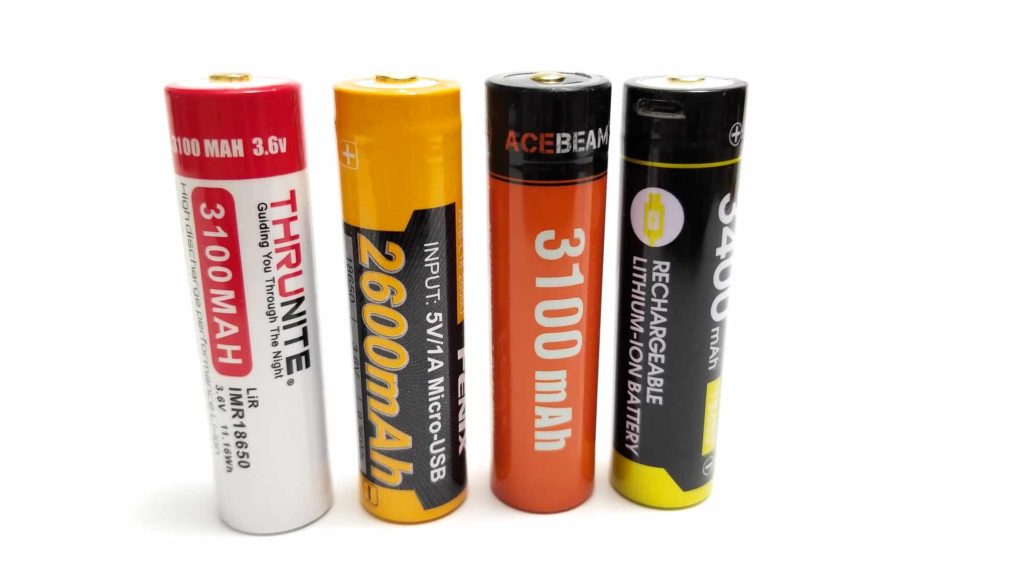
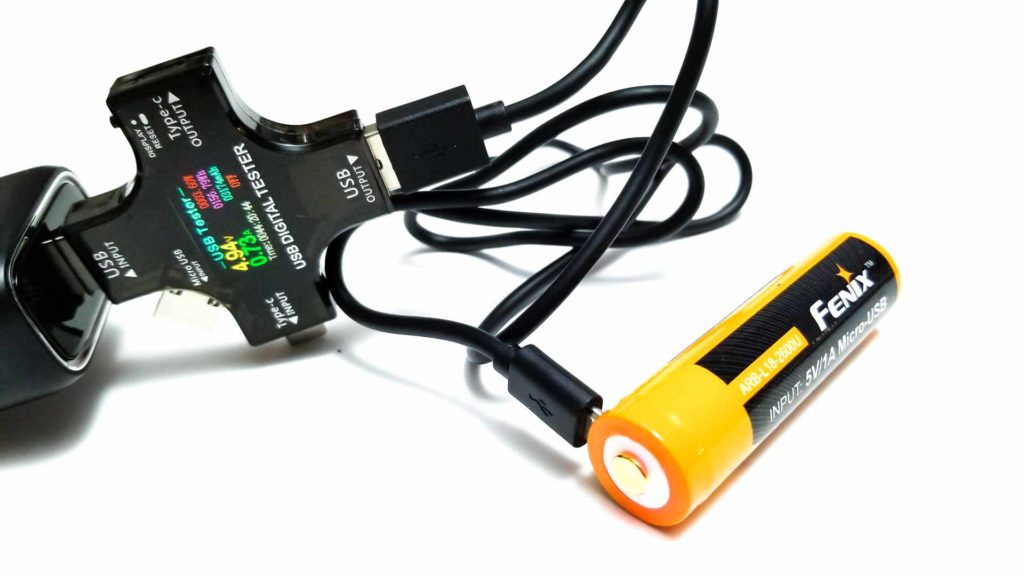
Performance
Lumen measurements:
Lumens were measured using my home made 30 cm integrating sphere that’s been calibrated with several lights of known output and a Makkua-calibrated Convoy S2+. I use a Digi-Sense 20250-00 datalogging luxmeter. I used the included fully charged Fenix 2600 mAh battery for the test. Amps were measured using my Radio Shack T-RMS multimeter with 16 gauge wires inserted in the meter for currents under 8 amps.
| Mode | Amps at start | Specs | turn on | 30 sec | 10 min |
|---|---|---|---|---|---|
| Eco | 11 mA | 5 | – | – | – |
| Low | 85 mA | 50 | – | – | – |
| Med | 239 mA | 150 | 163 | 159 | 159 |
| High | 1.04 amps | 600 | 605 | 606 | 589 |
| Turbo | 5.04 amps | 1700 | 1741 | 1685 | 680 |
Parasitic drain:
- 2.34 µA
Runtime graph
This is where professional-grade lights are separated from budget-oriented, consumer-grade, or enthusiast lights. I’m expecting great consistency from the PD35 V3.0. I tested Turbo, High, and Medium modes using the included 2600 mAh battery. I didn’t test Low and Eco since they’d run until the oceans dried up.
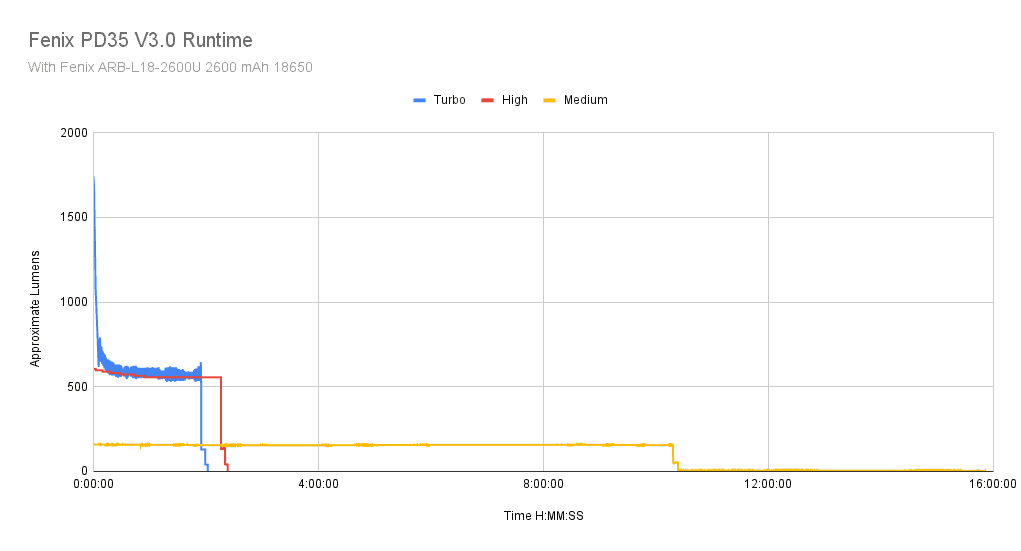
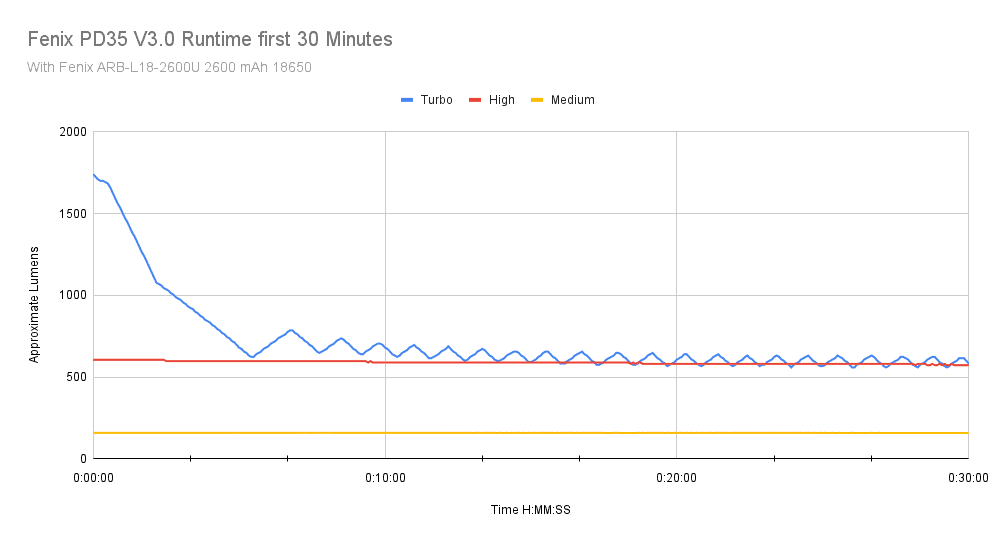
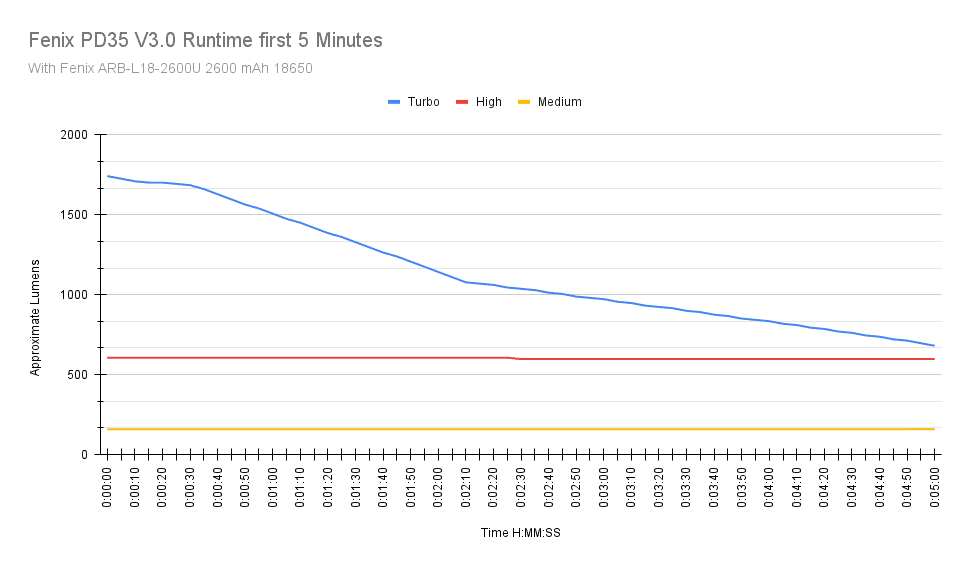
Turbo started at 1740 Lumens, and since there’s not much heat sinking or thermal mass here, it stepped down after 20 seconds, dipping to ‘only’ 1692 Lumens by 25 seconds. In fact, the output stayed above 1500 Lumens for over a minute, which is plenty bright. Although it heated up quick, there’s a hard thermal limit at 51 C, which it hits at 90 seconds in. The output stayed above 1000 Lumens for almost 3 minutes before gradually declining over the next 60 seconds until settling around 700 Lumens. Here’s where it gets interesting and the thermal regulation goes to work, adjusting the brightness to keep the temperature consistent. The adjustments aren’t as abrupt as some cheaper lights though. Either way, it’s not noticeable without an instrument. This thermal regulation lasted until 1 hour 54 minutes when LVP pulled the plug and dropped the output to 129 Lumens, then down to 40 five minutes later. The light shut off at 2 hours and 1 minute. Fenix specs 1 hour 25 minutes. The light never exceeded 51 C, and was hand holdable the whole runtime.
High started at 605 Lumens and held it for almost 2.5 minutes, which is pretty good for a small light, settling at 597 Lumens which it held for another 8 minutes 20 seconds, before another step down to 589 Lumens, finally settling at about 550 Lumens by 54 minutes. The output was steady for the next hour and 20 minutes before a deep decrease at 2 hours 16 minutes. LVP pulls the plug 8 minutes later at 2 hours 23 minutes. The specified runtime is 2 hours 35 minutes. I didn’t see any temperature management this time though, as the temps never went over 50 C and the light was cool enough to hold the entire runtime.
For Medium mode, I hunkered down and just let it run, and run…and run. I knew it would last a long time with ridiculously consistent output and that’s what I got. The test started at 158 Lumens, and didn’t change much over the next 10 hours. The output didn’t drop below 150 Lumens until 10 hours 18 minutes in when LVP started intervening and dropped the output to 54 Lumens, then down to 4 Lumens 5 minutes later. The output dropped to under 3 Lumens at 15 hours 43 minutes, and the light shut off at 15 hours 51 minutes 15 seconds. Fenix specs only 8 hours 30 minutes for the runtime, so I don’t know where they got that figure? Heat was not an issue and the light barely went over ambient temperature.
Again, we see that this is where a light becomes worth the price, with long, consistent runtimes and well-regulated output and temperatures on higher modes. Not hot-potato nonsense here with a light getting burning hot after 30 seconds. These are built for tasks like 12 hour graveyard shifts on security detail, inspecting large objects from a distance, or sticking on a diffuser cone and directing traffic for 8 hours…in the pouring rain. The temperature regulation works fantastically, and any brightness adjustments are not noticeable with the naked eye. Moreover, you can hand hold the PD35 V3.0 during extended Turbo runs, and it’s cool enough for continuous use on High as well. These are essential features for professionals. I got great runtimes even with the small 2600 mAh battery, a testament to the excellent driver. All what I expect from Fenix.
Throw numbers:
I measured throw with the Uni-T UT383S luxmeter indoors at 5 meters. I used the fully charged included battery.
| Mode | Specs | Candela measured | Meters | Yards |
| Eco | 100 cd | 100 cd | 20 | 21.8 |
| Low | 1000 cd | 925 cd | 61 | 66 |
| Medium | 3000 cd | 2750 cd | 105 | 115 |
| High | 11,700 cd | 10,200 cd | 202 | 221 |
| Turbo | 31,900 cd | 30,400 cd | 349 | 381 |
For throw, Eco mode was dead-on, but the others are coming in a bit low, but still not enough of a difference to make a difference (Fenix specs Turbo throw at 357 meters). This is excellent throw, and will lend itself to pretty much any duty related task other than really long-distance searching. The SFT40 really improves throw over something like an XP-L HI in lights with smaller reflectors like the PD35 V3.0 and Acebeam P15. Remember, this is a 25 mm head, and I’m used to seeing these numbers on 30 mm or larger reflector lights.
Beamshots
Beamshots of the following flashlights
- Acebeam P15
- C8 with SST40
- Fenix PD35 v3
- Olight Odin
- Sofirn SC31T
- Thrunite BSS v4
Outdoor pictures: The fence is about 95 meters away. The PD35 V3.0 has some great reach thanks to the SFT40 LED. Although an SST40 can reach the fence no problem, at longer distances the SFT40’s hotspot is more intense and focused, allowing you to see things better farther away.






Disclaimer: This flashlight was sent to me for review at no cost by Fenixlighting. I have not been paid to review, nor have I been holding back on problems or defects.
Final Verdict
Pros
- Compact and lightweight
- Includes every accessory to get started
- Great throw
- Very consistent output
- Excellent built quality, fit and finish
- Doesn’t get very hot
- Non-proprietary battery
Cons
- Low capacity battery
- Flat top unprotected batteries don’t fit
Explanation on star ratings:
1: Avoid: my phone flashlight would be a better choice – 2: Poor: significant defect or issues; almost unusable – 3: Average: some defects or issues; but still usable 4: Good: recommended (minor issues) – 5: Great: highly recommended

5 stars: ★★★★★
For 90% of flashlight enthusiasts, lights with FET drivers powering arrays of high-powered emitters with Anduril/Anduril2, NarsilM are just fine, and it’s good for the industry (Lumens sell, remember?). The other 10% are guys and gals who need a reliable, high-quality light with long runtimes and fully regulated output that won’t burn their hands off after 30 seconds or leave them frustrated and fretting over turning it on and changing modes.
This is a great light for a police officer, security guard, inspector, plumber, electrician, or anyone who needs a light that turns on when asked, and does so reliably. It’s easy to handle, and the light weight helps with cutting unnecessary weight from a duty belt. Modern emitters and batteries have done so much for performance, and comparing the PD35 V3.0 to my Streamlight Stinger is a great example of this. I love the consistent output, great throw, long runtimes (even with the low capacity battery), and excellent thermal regulation. It’s really a complete package that will appeal to professionals and enthusiasts. I had to nitpick to find faults, and couldn’t really find any, other than unprotected 18650s don’t work, and I would have liked to see a higher capacity battery included.
Another great light from Fenix. Finding a balance of output, long runtimes, and consistent performance without sacrificing output is a delicate balance that Fenix seems to have mastered with the PD35 V3.0, and a perfect example that continuous product improvement is an important endeavor for them. This is a great addition to the PD series. 5 stars for the Fenix PD35 V3.0.
Fenix PD35 v3 discount coupon
Get 10% off every purchase at Fenix Lighting US, by using our exclusive 1lumen discount code: 1lumen10
1lumen selects and reviews products personally. We may earn affiliate commissions through our links, which help support our testing.